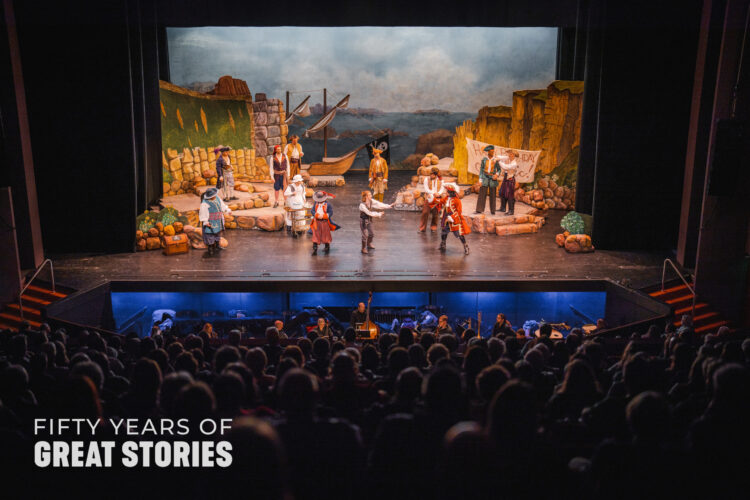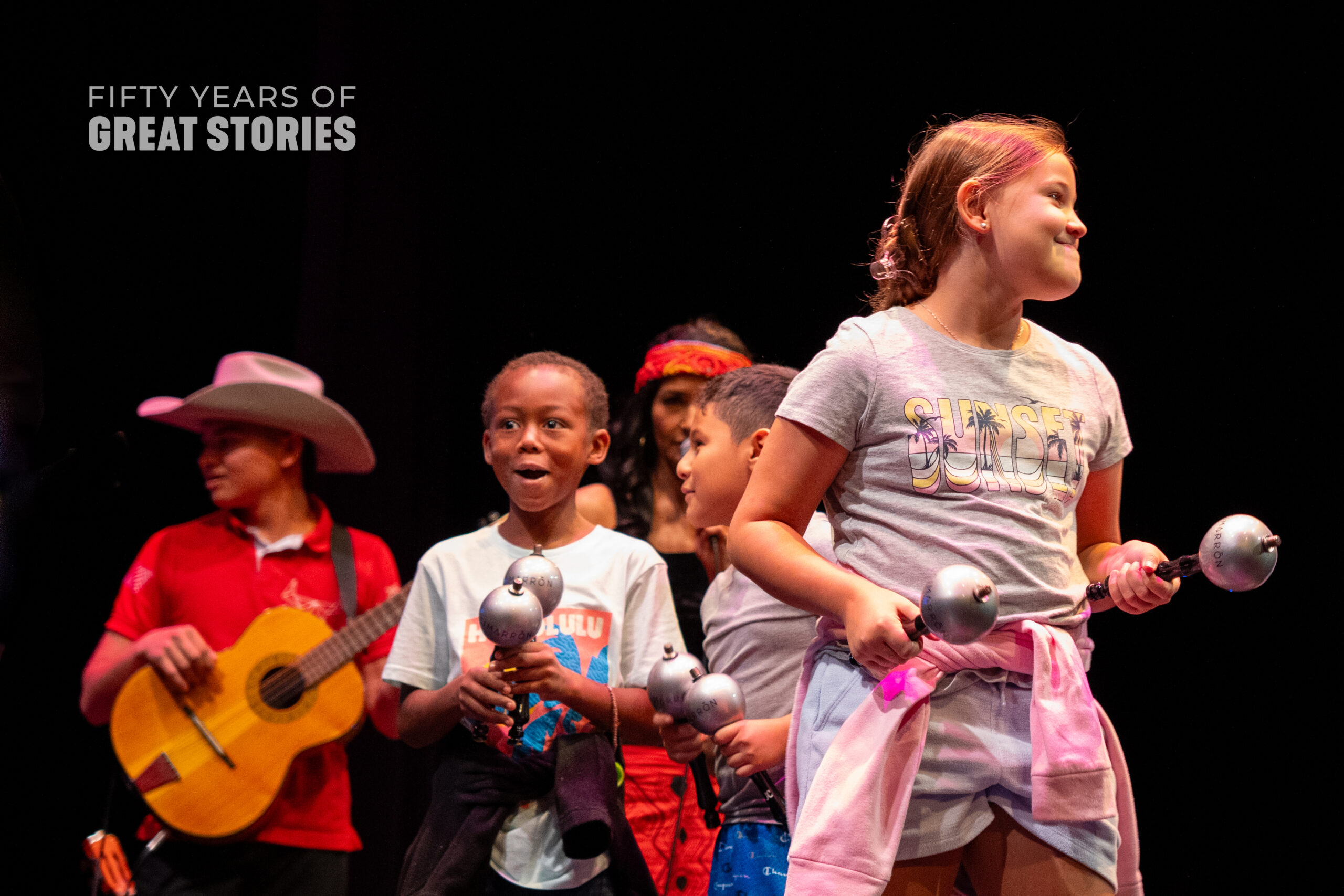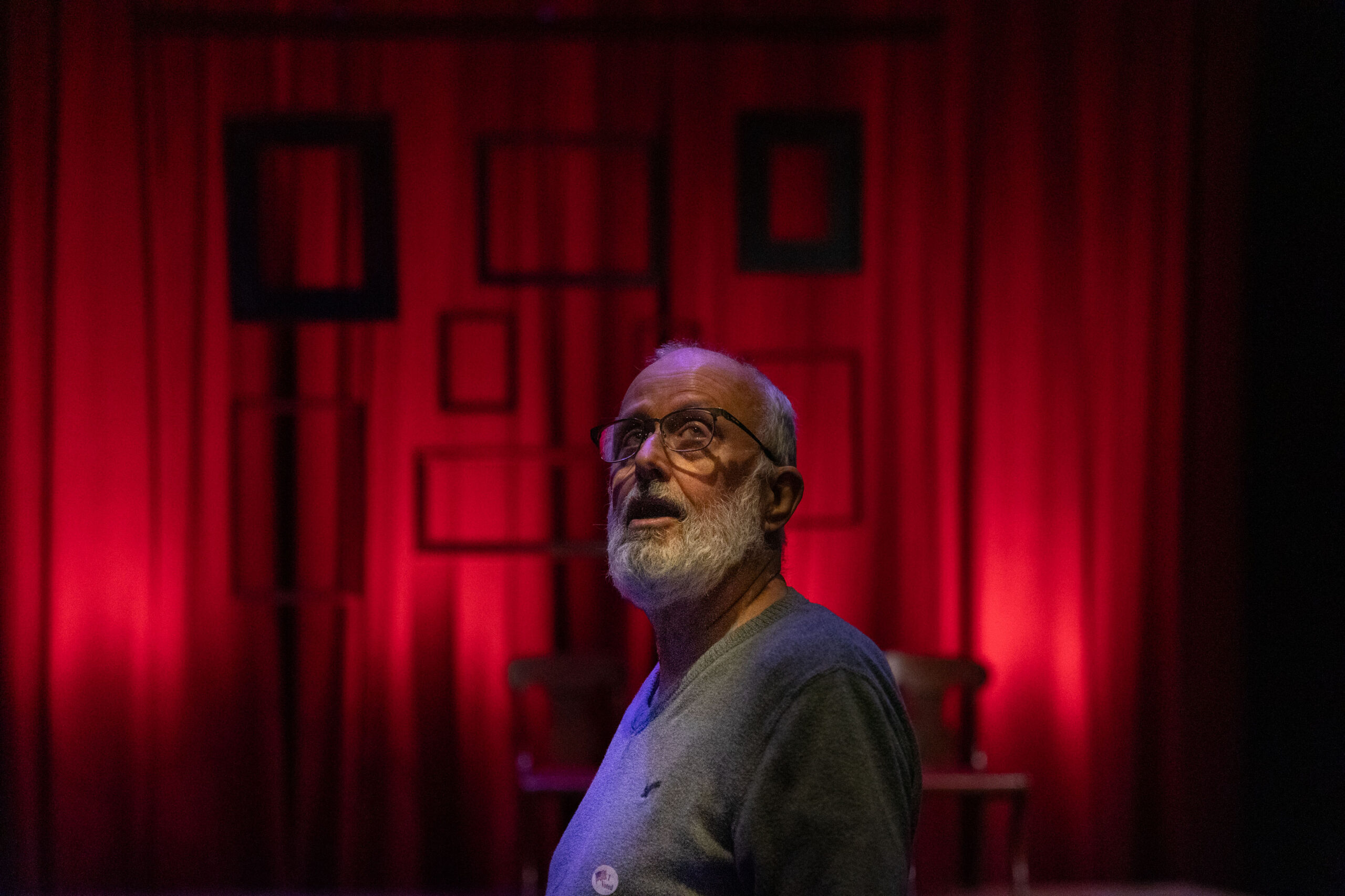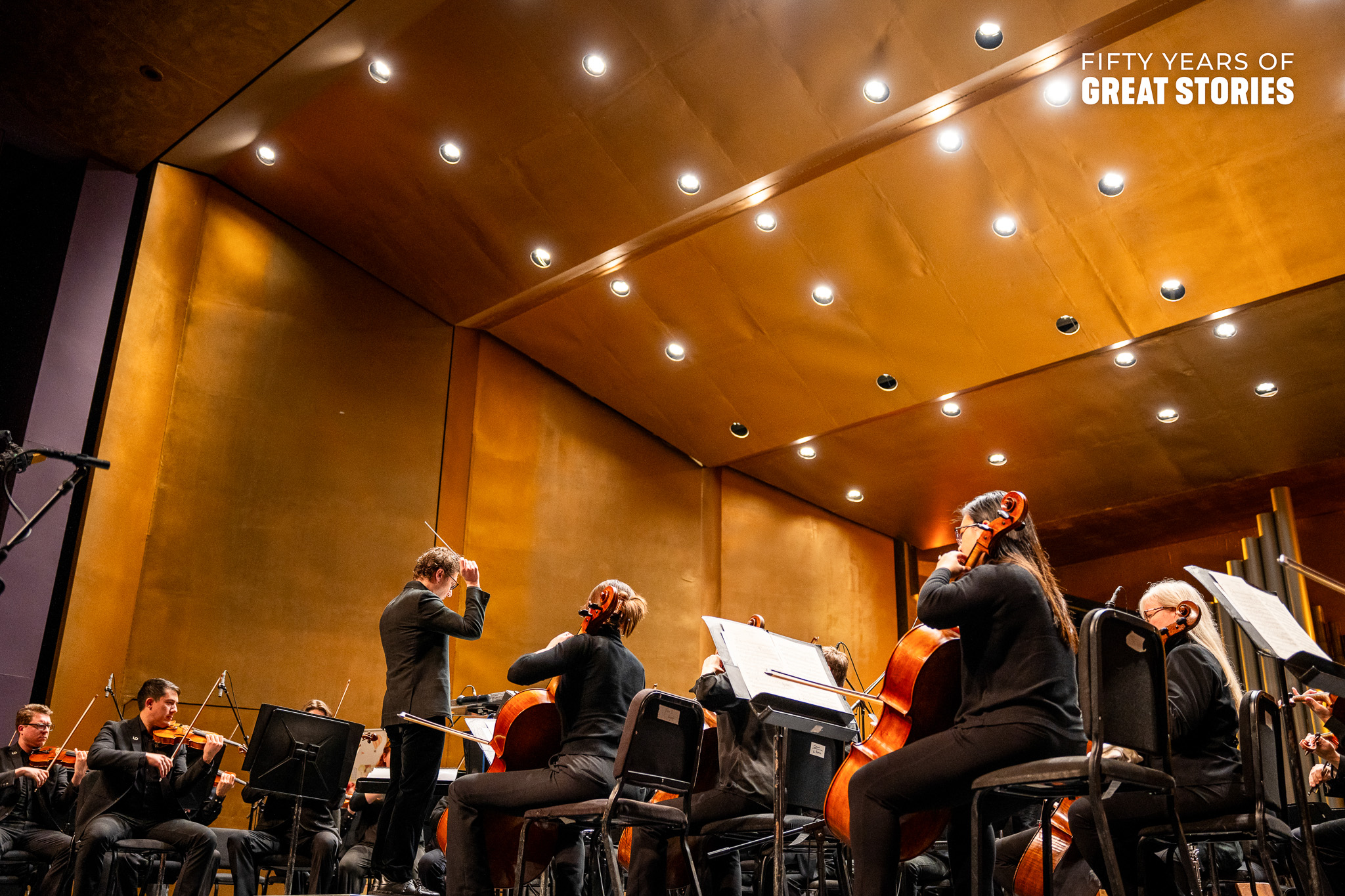Follow along as we celebrate our 50th Anniversary with 50 Years of Great Stories! These stories of impact are drawn from the past and present, told by our friends and neighbors to reflect the power of authentic connections and experiences.
Help make the Norton Center’s next 50 years even greater by donating today.
Cultural Currents: A Half-Century of Artistic Excellence
By Milton Reigelman
Is Centre College’s 204-year history more like the Clark’s Run stream that flows gently across Boyle County with only a few ripples, or more like the Cumberland River that flows along until it reaches the falls…and dramatically plunges 69 feet to an entirely new level? French historian Fernand Braudel studied societies in the Mediterranean basin that, like Clark’s Run, changed only incrementally and gradually over entire centuries. On the other hand — all of us have one, don’t we? — Karl Marx was most interested in societies that changed dramatically, suddenly, like the Cumberland River, because of game-changing events like Gutenberg’s invention of movable type in Strasbourg or, say, proletarian revolutions.
The opening of the Norton Center in almost the exact middle of Centre’s second century marked what Marx would think of as a dramatic, fundamental change. During the Norton Center’s Opening Night Gala on Friday, September 22, 1973, not one person drowned going over a waterfall or was guillotined, but there was a palpable sense within the College (then only one- third of its present size) as well as throughout Kentucky (which lacked a modern concert hall) that something dramatic was happening in little Danville.
…Not that Danville had been a cultural wasteland. Since at least 1920, Centre had offered arts events for the community. From 1966 to 1973, these events were held in the Danville High School auditorium, overseen by Centre’s impishly creative English professor Paul Cantrell and his sidekick, the intrepid magnolia Ruby Moss Cheek (some alleged that Mrs. Cheek would show up at their door, sweetly make her pitch, and then weep helplessly until they relented and bought tickets for all three annual events). The two-year construction of the behemoth, modern building on College Street promised something dramatically different.
When Floyd Herzog, the first executive director of what was then called the Regional Arts Center, arrived in Danville, anticipation only increased.
Because Herzog sometimes wore a pink jumpsuit as he rode his bicycle from his home on St. Mildred’s Court to a downtown barbershop to get his head shaved, the artsy students in that looser, post-60s era immediately and affectionately dubbed him “Pink Floyd.”
Herzog was a bona fide, card-carrying impresario. He’d produced two operas before he was 22; had studied elocution, acting, music and dance; and had spent a year as an “unprecedented Fulbright artist/scholar” at Milan’s famed La Scala Opera.
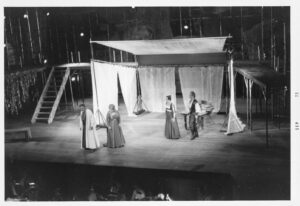
The summer before the opening gala featuring Verdi’s Otello, English professor Charlie Hazelrigg counseled his male colleagues to buy — not rent — tuxes, and his then-few female colleagues, long dresses. At the early- September faculty meeting, music professor Marilyn Somville reviewed Otello’s exciting score, ending with, “No matter how far from the balcony’s edge you’re seated, fasten your seatbelts: prepare for a musical hurricane!” Reinhard Heinrich of the famed Bayreuth Festival had designed the opera’s sets, costumes and lighting to complement the 20th-century aesthetics of the building as well as its opening exhibition in the Grand Foyer: 26 huge post-war canvases from the Guggenheim Museum.
One grand opening wasn’t enough. On November 2, 1973, the tuxes and long dresses returned for the Dedicatory Evening Gala, featuring the Detroit Symphony with the diminutive 23-year-old Brazilian pianist and winner of the Van Cliburn international competition Christina Ortiz, playing the crowd-pleasing Rachmaninoff Concerto No. 2. That evening, all 1,483 patrons realized the difference between simply hearing
a recording and experiencing it being created with all senses. At several points in that extravagantly romantic piece, Ortiz seemed to leap from her seat in order to attack the keys with greater force. The grand architecture itself seemed to shake.
Herzog’s decision to open the first season with a well-known opera set the stage for many others over the following 49 years, including Traviata, Faust, Rigoletto, La Boheme (and its update, Rent), The Marriage of Figaro, Don Giovanni, Aida, The Barber of Seville, Tosca, Porgy & Bess, Madame Butterfly, Carmen, The Mikado, HMS Pinafore and this past season, the delightful Pirates of Penzance.
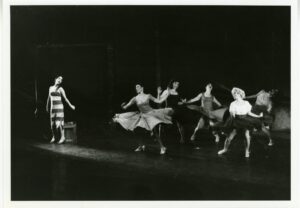
Herzog’s inclusion of a popular Broadway play that first season also set the Norton Center stage for the next half-century. Anyone interested in the American musical since its 1947 Oklahoma beginning wouldn’t really have had to leave Boyle County — if they were Norton Center subscribers, that is. They could have experienced the work of Rodgers and Hammerstein (Oklahoma, The Sound of Music), Lerner and Lowe (My Fair Lady, Brigadoon, Camelot), Jerry Bock (Fiddler on the Roof ), Gene Kelly (Singing in the Rain), Mel Brooks (The Producers), Leonard Bernstein (West Side Story), Marvin Hamlisch (A Chorus Line), Andrew Lloyd Weber (CATS), Stephen Sondheim (A Little Night Music, Into the Woods) and Bob Fosse (Chicago, returning this season on May 1, 2024).
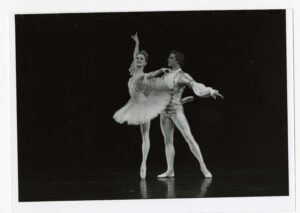
Two other choices Herzog made for the opening season also had strong legs, so to speak. Siberia’s Krasnayarsk Dance Company was the Norton Center’s first of more than 35 first-rate folk groups from around the world. During my 1979-1980 Fulbright year in Warsaw, we were twice able to get tickets for the Bolshoi ballet, but even as privileged guests of the American Embassy were unable to snare tickets for the incomparable Polish dancers and singers of Mazowsze; for that we had to wait until they later came to the Norton Center. The same for the inestimable Alvin Ailey dancers: we saw them later in Danville because tickets for their East European tour were impossible to find!
Although Herzog himself was famously dramatic, one event he arranged during his 11-year tenure remains in a category of its own, a true pièce de résistance. In the fall of 1977, the Fifth International Verdi Congress met at the Norton Center in conjunction with a rarely-produced version of Macbeth. The Grand Foyer overflowed with fancy flowers and fine china for the dinner, whose chef had been flown in from New Orleans. After the meal, the lights dimmed and two columns of waiters, in livery, processed in an almost choreographed ballet down the twin grand staircases. Each waiter held aloft a tray of flaming baked Alaska.
In 1983, George Foreman, Herzog’s successor, arrived from an arts center in Kansas. If the selection committee and some board members had initially been a tad skeptical about his interest in American band music (rather than, perhaps, Verdi?) and his “ah-shucks” demeanor, they were quickly won over. Jane Morton Norton’s instantaneous liking of him — and his liking of her — proved to be crucial for the center’s future. Baudelaire once said “I pray to Poe.” Foreman later averred, “I pray to Jane Morton Norton.”
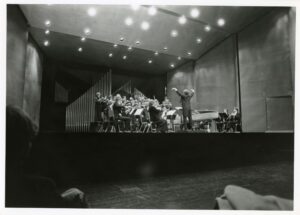
During Foreman’s 25-year tenure, he continued Herzog’s basic formula, but with Jane Norton’s encouragement and support, brought in some of the most important national and international orchestras (the Philadelphia Orchestra, the New York Philharmonic, the Cleveland Orchestra, L’Orchestre de Paris, The Berlin Symphony, etc.) and moved the “Musica da Camera” series to the very top level by presenting groups such as the Emerson, Guarneri, Orion, Tokyo, Kronos and Julliard String Quartets.
Foreman once said his goal was to put before the students, faculty, staff and community the very best performers — not only in classical music, but in every entertainment category. Packing the hall for the indefatigable Willie Nelson (Willie sang and played for almost three hours) then Dolly Parton (after her first encore the audience screamed so long and loud that Dolly returned for a second) gave Foreman particular pleasure; both Willie and Dolly enjoyed themselves enough to return later. In dance, he brought in Nureyev, Barishnikov, Twyla Tharp, groups from both the Bolshoi and Kirov, Tap Dogs, Pilobolus, etc. On strings: Itzhak Perlman, Joshua Bell, Christopher Parkening and Yo-Yo Ma (who returned three times, most recently in 2022). Although soprano Kiri Te Kanawa threatened to leave the stage and seemed grumpy throughout her performance after a cell phone in the audience went off, Kathleen Battle and Leontyne Price battled on pricelessly through amazing pieces to delighted audiences. One-person shows included Garrison Keillor rifting about Lake Woebegone, Lynn Redgrave’s Shakespeare for My Father and Hal Holbrook’s incomparable Mark Twain Tonight! For popular singers and groups, who could top The Four Tops, the Pointer Sisters, Ray Charles, Aretha Franklin, Roberta Flack, Al Green and the late Tony Bennett (whose return visit in 2011 when he was a mere 84 was even better)?
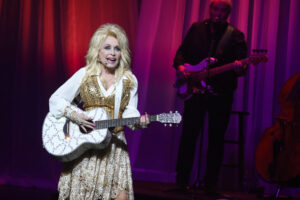
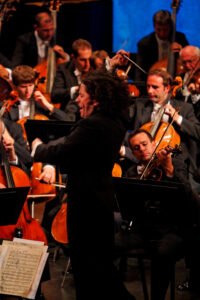
Before Foreman left in 2009, he outdid himself by planning perhaps the most dazzling concert in the Norton Center’s half-century. The best orchestra in the world (the Vienna Philharmonic) conducted by the best young conductor on the planet (Gustavo Dudamel) appeared on only two stages that year: New York’s Carnegie Hall and Danville’s Newlin Hall. In July 2010, Steve Hoffman, the third Norton Center director, arrived after being CEO of the Washington Pavilion of Arts and Sciences and the National Steinbeck Center. For Hoffman’s second show, he oversaw the unforgettable, black-tie evening with the Vienna Philharmonic and “the Dude.”
Since his arrival, Hoffman has worked to continue the Center’s traditions set by Herzog and Forman, but as Heraclitus said, “You can’t put your foot in the same river twice”: different river, different foot. In 2010, the cultural landscape greeting Hoffman was very different than it had been in 1973. Lexington, Louisville, Richmond and even smaller Kentucky cities had built large, modern concert halls. As streaming became popular, entertainment of every sort was available to everybody, instantly and cheaply. People were less willing to fill up their schedules in advance with season subscriptions.
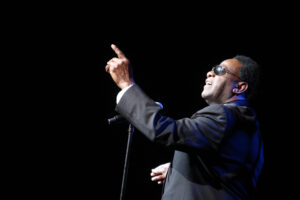
During his 13-year tenure, Hoffman has used even more diverse programming and ambitious outreach to reach new audiences. This past season, for example, you could not only sing along with Broadway’s celebrated musicals (Hairspray and CATS), you could interact with Zakir Hussin, Edgar Meyer and banjo virtuoso Béla Fleck at one of the regular informal afternoon sessions before the evening entertainment. You could listen to pianist Dominic Cheli play Mussorgsky’s “Pictures at an Exhibition” while viewing on the Weisiger screen the 10 paintings that inspired the suite, and you could be energized by both the heart-pounding dance and traditional stories of Step Afrika!. Hoffman’s focus on diverse programming has also brought many intimate and contemporary cultural shows to Weisiger Theatre, setting up opportunities for discovery for curious audiences.
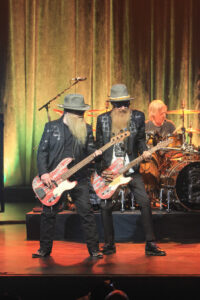
Throughout the entire past year, Danvillians could experience a Norton Center project that highlighted the once-thriving Black community on Danville’s South 2nd Street that was ended during urban renewal. Hoffman worked closely with Michael Hughes, head of the Danville-Boyle County African American Historical Society, partnered with Centre’s anthropology and history faculty and students and brought in countless groups from around the region to view the year-long “We Were Here” multimedia exhibit that covered the Grand Foyer. As part of the regular season programming, you could listen to Kentucky poet laureates Frank X. Walker and Crystal Wilkinson in Makin’ Cake and Other Stories about Food and Community and hear Eric Owens (who’d recently starred in the Metropolitan Opera’s Porgy and Bess) as he honored Danville’s own Todd Duncan, who in 1935 originated the role of Porgy in Gershwin’s opera.
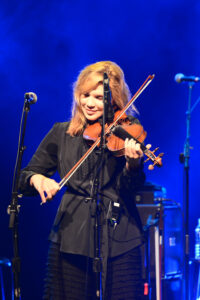
Hoffman expanded programming to not only include a wider range of rock and country events, like Alison Krauss and Union Station, ZZ Top, Styx, Wynonna Judd and David Crosby, but has also carried on the international scope of his two predecessors: bringing in dance from around the world and orchestras from Venice, Moscow, Shanghai and Munich (with the guitar quartet Los Romeros). In 2015, he created a Japanese Winter Plum Festival at the Norton Center, followed by a Kentucky Bluegrass Festival in Yamaguchi, home of Centre’s Japanese student exchange.
After 2007, when Danville became officially “twinned” through Sister Cities International with Carrickfergus, Northern Ireland, Irish music became even more important in Danville. Hoffman has presented the very best Irish musical ensemble (The Chieftains), the best of Irish dance (Velocity Irish Dance) and the wonderful group of Irish vocalists (Celtic Woman, who will return on December 2 this year).
For all of Foreman’s years and most of Hoffman’s, the Norton Center has also functioned as a superb and unique “lab” for the first-year humanities sequence that ran for 40 of the Center’s 50 years, and introduced every single Centre student to Western culture.
It’s one thing to sit in a classroom studying classical music and art; it’s another to walk literally across the street and experience those things personally and up close.
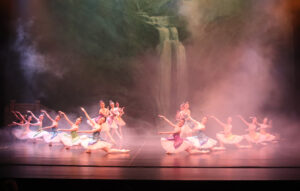
Humanities students as well as humanities faculty make great use of the Norton Center offerings. Consider one of English professor Mark Lucas’s Humanities 120 assignments: “Think of a concerto as a football game between a soloist (tonight, pianist Ingrid Haebler) and an orchestra (tonight, the Mozarteum Orchestra of Salzburg). In 600 words, describe who wins the match at tonight’s performance.” When students compared a 2-D photo of Bernini’s David with Rodin’s actual sculpture (Walking Man) in the Norton Center lobby, or compared a 2-D photo of Raphael’s School of Athens fresco to the actual painting of Jan Wenix’s The Betrothal, they learned something crucial about the sheer power of art.
In the early 1970s when the Centre board and president decided to take a great leap and build a huge regional arts center, there were
those who thought they’d lost their minds. Their surprising and ambitious decision changed the course of this college and is a key to its uniqueness and appeal today.
In the last 50 years, the Norton Center has been responsible for more than 2,500 events in the Grand Foyer and on the Newlin and Weisiger stages.
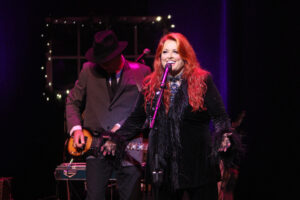
If rivers could speak, the Cumberland might say that after Cumberland Falls, it felt a new sense of itself as it coursed along through Lake Cumberland and Nashville and down the Ohio and Mississippi rivers headed for New Orleans: Laissez le bon temps rouler! It’s difficult to know exactly what good times will roll on at the Norton Center in the next half-century. What’s absolutely clear is that, building on its amazing past 50 years, it will continue to bring amazing entertainment, education, culture and delight to the entire Centre community, and well beyond.
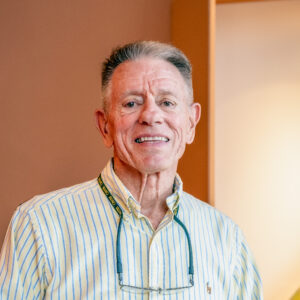
During his 46 years as an English and humanities professor at Centre College, Milton Reigelman served as Acting President during the 1997-98 academic year and Interim Director of the Norton Center for the six months before Hoffman.
